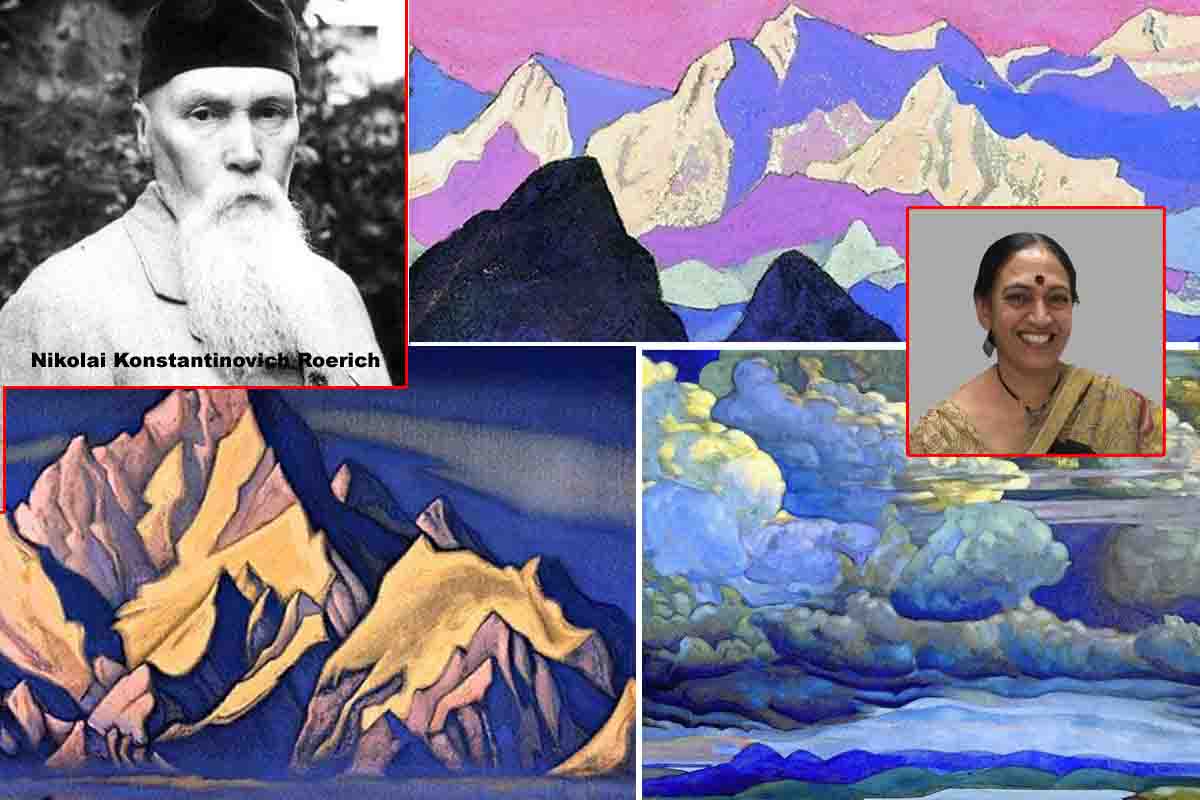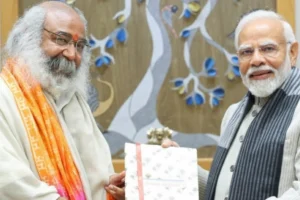
Nikolai Konstantinovich Roerich
The year 2024 celebrates the 150th anniversary of Nikolai Konstantinovich Roerich (1874-1947), a renowned Russian artist, thinker, scientist, writer, poet, and philosopher. Roerich began his artistic career in Russia and completed it in India. His paintings, poems, and books reflect his deep love for art, culture, people, and life.
Born in 1874 in Saint Petersburg, Russia, Roerich came from a notable family. His father was a renowned notary, and his mother hailed from a wealthy merchant family. Roerich received the highest level of education and showed an early interest in painting, history, and archaeology. By 16, he was already considering a career as an artist. After finishing high school in 1893, he enrolled in the Art Academy and also started studying law at Saint Petersburg University. His early paintings aimed to reflect Russian spiritual culture and the history of his homeland.
After graduating, Roerich spent a year traveling through museums and exhibitions in Paris and Berlin, studying art under the renowned artist F. Corman in France. He met his future wife, Elena, during an archaeological expedition in Russia’s Tver province. Elena was the daughter of a prominent architect from Saint Petersburg. In 1902, they had a son, Yuri, who later became an Oriental scholar, and in 1904, their second son, Svetoslav, was born, who also became an artist and public figure. Roerich and Elena traveled through over forty ancient Russian cities, creating sketches and photographing monuments.
Also Read: Drunk Civic Volunteer Runs Bike Into Protest Against RG Kar, Held
Roerich was a highly talented individual with skills in various fields. He was a scholarly editor, excellent archaeologist, remarkable artist, talented decorator, set designer, and graphics master. Throughout his life, he visited exhibitions across England, France, Germany, Italy, America, India, and other countries, creating thousands of paintings and sketches, designing sets and costumes for opera and ballet, and making mosaics and murals for public buildings and churches. In 1921, he founded the Master Institute of United Arts in New York, believing that art, knowledge, and beauty would guide humanity’s future. He also established an international art center in New York for artists from different countries.
Poetry and Philosophy
Asia, especially India, was very dear to Roerich, evident in his creative works. He deeply understood Eastern mentalities and historical development. Roerich played a significant role in redefining culture as the foundation of human existence and a concept linked to human evolution. He saw culture as love for individuals and a combination of life and beauty. He believed that culture was essential for personal improvement and reaching new levels of existence. After his grand expedition to Central Asia in 1928, he created the Roerich Pact to protect humanity’s cultural heritage.
Roerich’s poems and paintings are closely linked and complement each other. Russian writers like Maxim Gorky and Leonid Andreev, as well as India’s great poet Rabindranath Tagore, praised his work, seeing a spiritual connection with Indian knowledge. Roerich was inspired by Swami Vivekananda’s books and studied the Vedas and Bhagavad Gita. His poetry is deeply spiritual and humanitarian, discussing the soul’s inner life. His poems often require effort to understand their meaning and offer a glimpse into a world of knowledge, beauty, love, and courage.
Roerich in India
In 1923, Roerich and his family came to India for a major scientific expedition. They visited cultural monuments in Sikkim and the eastern Himalayas, and later traveled to western India, Chinese Turkestan, Soviet Altai, Mongolia, and Tibet. The expedition ended in Darjeeling. Roerich then settled with his family in the Kullu Valley of the western Himalayas, where he established the Urusvati Himalayan Research Institute to study and analyze the results of his Central Asian expedition and future research in the Himalayas.
India became Roerich’s second homeland. He spent almost 20 years here, creating over a thousand paintings and publishing several books. His works celebrated high human qualities such as purity, harmony, compassion, and inner energy. His time in India was creatively fruitful, producing an impressive series of paintings, including those of Shambhala, Genghis Khan, sacred mountains, Tibet, and the famous Himalayan series. The Himalayas, in particular, held a special place in his work.
Final Days
In the 1940s, Roerich created new paintings and literary works inspired by fresh artistic ideas. His skills continued to improve, and his paintings became richer in color and deeper in philosophical meaning. Roerich’s works are displayed in museums worldwide and private collections, leaving a significant impact on cultural history in Russia, India, and beyond. His contributions to world culture will always be remembered, and his name will be etched in history for centuries to come.
(The author is a Russian linguist, translator, and former professor at JNU’s Russian Studies Center.)
To read more such news, download Bharat Express news apps



















